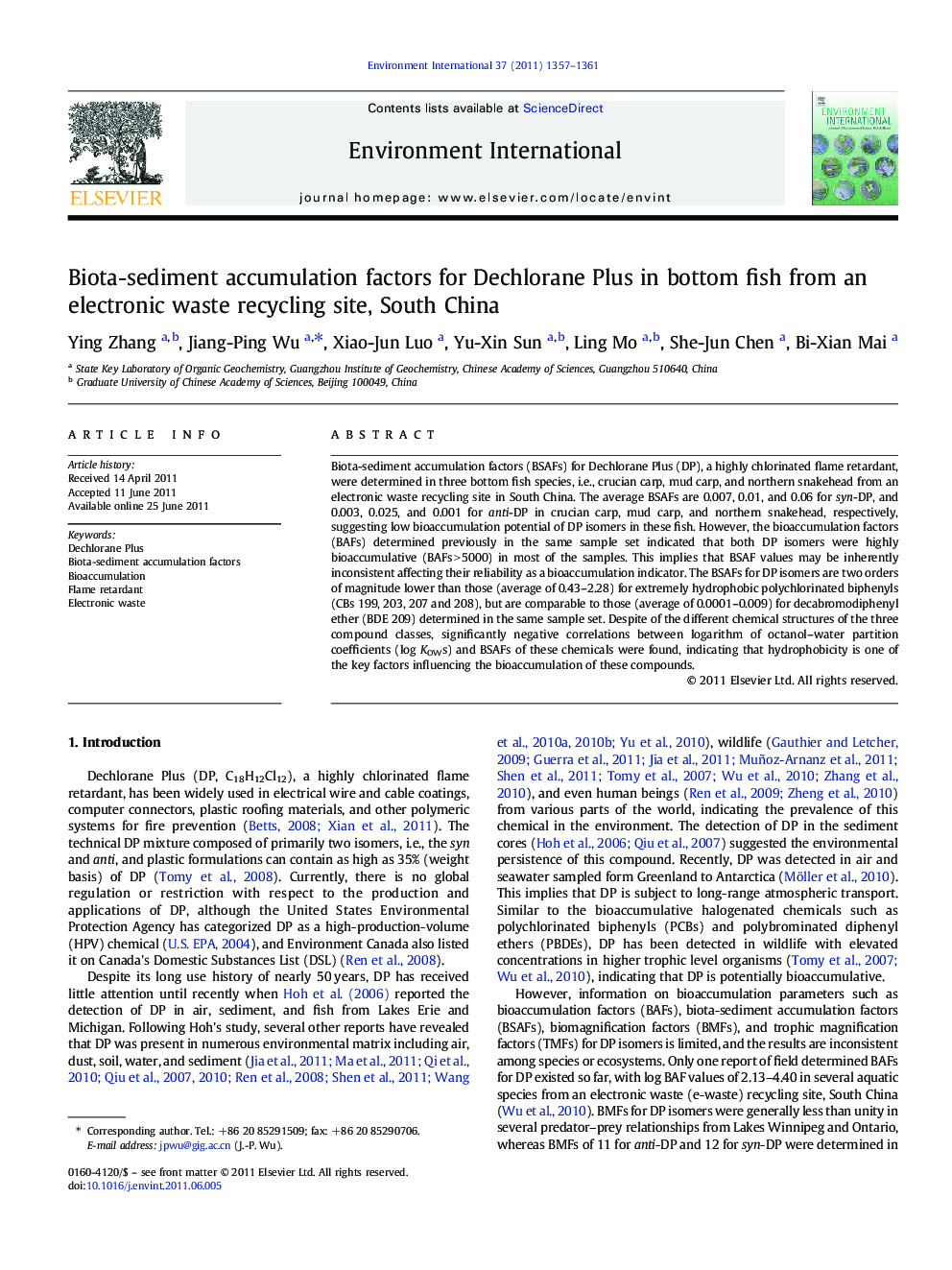| Article ID | Journal | Published Year | Pages | File Type |
|---|---|---|---|---|
| 4423257 | Environment International | 2011 | 5 Pages |
Biota-sediment accumulation factors (BSAFs) for Dechlorane Plus (DP), a highly chlorinated flame retardant, were determined in three bottom fish species, i.e., crucian carp, mud carp, and northern snakehead from an electronic waste recycling site in South China. The average BSAFs are 0.007, 0.01, and 0.06 for syn-DP, and 0.003, 0.025, and 0.001 for anti-DP in crucian carp, mud carp, and northern snakehead, respectively, suggesting low bioaccumulation potential of DP isomers in these fish. However, the bioaccumulation factors (BAFs) determined previously in the same sample set indicated that both DP isomers were highly bioaccumulative (BAFs > 5000) in most of the samples. This implies that BSAF values may be inherently inconsistent affecting their reliability as a bioaccumulation indicator. The BSAFs for DP isomers are two orders of magnitude lower than those (average of 0.43–2.28) for extremely hydrophobic polychlorinated biphenyls (CBs 199, 203, 207 and 208), but are comparable to those (average of 0.0001–0.009) for decabromodiphenyl ether (BDE 209) determined in the same sample set. Despite of the different chemical structures of the three compound classes, significantly negative correlations between logarithm of octanol–water partition coefficients (log KOWs) and BSAFs of these chemicals were found, indicating that hydrophobicity is one of the key factors influencing the bioaccumulation of these compounds.
Research highlights► Low BSAFs for DP isomers were found in three bottom fish species. ► BSAFs for DP may be inherently inconsistent affecting their reliability as a bioaccumulation indicator. ► BSAFs for DP were comparable to those for BDE 209, but were two orders of magnitude lower than those for PCBs.
